
The Arizona Territory, colloquially referred to as Confederate Arizona, was an organized incorporated territory of the Confederate States of America that existed from August 1, 1861, to May 26, 1865, when the Confederate States Army Trans-Mississippi Department, commanded by General Edmund Kirby Smith, surrendered at Shreveport, Louisiana. However, after the Battle of Glorieta Pass, the Confederates had to retreat from the territory, and by July 1862, effective Confederate control of the territory had ended. Delegates to the secession convention had voted in March 1861 to secede from the New Mexico Territory and the Union, and seek to join the Confederacy. It consisted of the portion of the New Mexico Territory south of the 34th parallel, including parts of the modern states of New Mexico and Arizona. The capital was Mesilla, along the southern border. The breakaway region overlapped Arizona Territory, established by the Union government in February 1863.
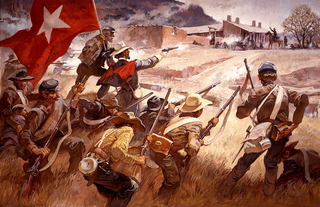
The New Mexico campaign was a military operation of the trans-Mississippi theater of the American Civil War from February to April 1862 in which Confederate Brigadier General Henry Hopkins Sibley invaded the northern New Mexico Territory in an attempt to gain control of the Southwest, including the gold fields of Colorado and the ports of California. Historians regard this campaign as the most ambitious Confederate attempt to establish control of the American West and to open an additional theater in the war. It was an important campaign in the war's Trans-Mississippi Theater, and one of the major events in the history of the New Mexico Territory in the American Civil War.

The Battle of Valverde, also known as the Battle of Valverde Ford, was fought from February 20 to 21, 1862, near the town of Val Verde at a ford of the Rio Grande in Union-held New Mexico Territory, in what is today the state of New Mexico. It is considered a major Confederate success in the New Mexico Campaign of the American Civil War, despite the invading force abandoning the field. The belligerents were Confederate cavalry from Texas and several companies of Arizona militia versus U.S. Army regulars and Union volunteers from northern New Mexico Territory and the Colorado Territory.

The First Battle of Mesilla was fought on July 25, 1861, at Mesilla in New Mexico Territory, in present-day Doña Ana County, New Mexico.
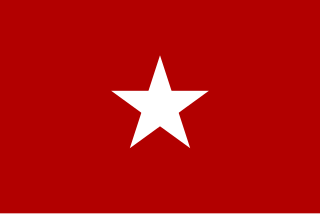
The Army of New Mexico, also known as the Sibley Brigade, was a small Confederate field army in the American Civil War. It operated in Confederate Arizona and New Mexico Territory during the New Mexico Campaign in late 1861 and early 1862, before it was transferred to Louisiana. At first the force was tasked with securing Confederate Arizona's forts, most of which were still in Union hands. John R. Baylor had already established the Confederate Territory of Arizona after the First Battle of Mesilla in 1861. Now the goal was to capture the remaining U.S. held forts in Confederate Arizona and to invade New Mexico Territory. The army also hoped to capture the mines of Colorado and California, to secure gold and silver supplies to finance the Confederate war effort. Ultimately, the Confederate plans were thwarted at the Battle of Glorieta Pass.
Fort Fillmore, located at 32°13′30″N 106°42′52″W, was a United States military fortification established by Colonel Edwin Vose Sumner in September 1851 near Mesilla in what is now New Mexico, primarily for the purpose of protecting settlers and traders traveling to California. Early frontier migrants were under constant threat from attack by local Native Americans, and a network of forts was eventually created by the U.S. government to protect and encourage westward expansion. Fort Fillmore was intended to protect a corridor plagued by hostile Apaches, where several migration routes converged between El Paso and Tucson to take advantage of Apache Pass.
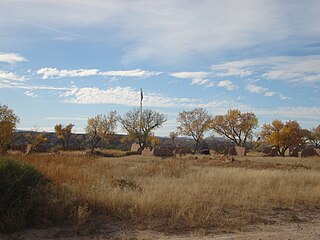
Fort Selden was a United States Army post, occupying the area in what is now Radium Springs, New Mexico. The site was long a campground along the El Camino Real de Tierra Adentro. It was the site of a Confederate Army camp in 1861. The U.S. Army established Fort Selden in 1865 for the purpose of protecting westward settlers from Native American raids, but the post fell into disrepair after the American Civil War. It was ultimately abandoned in 1891, due in large part to the decision to expand Fort Bliss and the lack of any expenditures for repair of the facility.

Fort Craig was a U.S. Army fort located along El Camino Real de Tierra Adentro, near Elephant Butte Lake State Park and the Rio Grande in Socorro County, New Mexico.
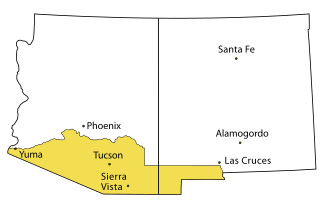
Prior to the adoption of its name for a U.S. state, Arizona was traditionally defined as the region south of the Gila River to the present-day Mexican border, and between the Colorado River and the Rio Grande. It encompasses present-day Southern Arizona and the New Mexico Bootheel plus adjacent parts of Southwestern New Mexico. This area was transferred from Mexico to the United States in the Gadsden Purchase of 1853. Mining and ranching were the primary occupations of traditional Arizona's inhabitants, though growing citrus fruits had long been occurring in Tucson.
The San Elizario Spy Company or Coopwood Spy Company was an independent volunteer company of cavalry formed by Captain Bethel Coopwood and mustered into Confederate service on July 11, 1861 in El Paso, Texas.
The Company A, Arizona Rangers was a cavalry formation of the Confederate States Army during the American Civil War.
The Department of New Mexico was a department of the United States Army during the mid-19th century. It was created as the 9th Department, a geographical department, in 1848 following the successful conclusion of the Mexican–American War, and renamed Department of New Mexico in 1853. It had to contend with an invading Confederate force during the New Mexico Campaign of the American Civil War from mid-1861 to early 1862, then with Apache tribes during the remainder of the conflict. It was merged into the Department of California after the end of the war as the District of New Mexico.

Union forces entered Tucson on May 20, 1862, with a force of 2,000 men without firing a shot.

The Second Battle of Mesilla was an engagement of the American Civil War. It was fought on July 1, 1862, and was the last engagement between Union and Confederate forces in the Arizona Territory.
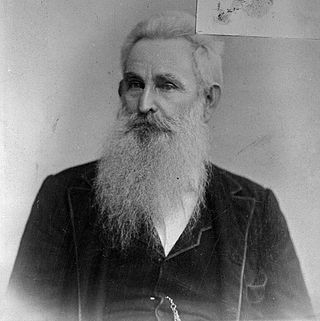
Bethel Coopwood (1827–1907) was a notable frontier figure of the American Southwest. He was born in Alabama, moved to Texas, was soldier in the Mexican–American War, and an officer in the Confederate Army in the American Civil War. He also was a lawyer, judge, and later a historian.
Fort Thorn or Fort Thorne, originally Cantonment Garland, was a settlement and military outpost located on the west bank of the Rio Grande, northwest of present-day Hatch, and west of Salem in Doña Ana County, New Mexico, United States. It was named for 1st Lt. Herman Thorn of the 2nd U.S. Infantry drowned in the Colorado River in 1849. He had previously been an aide to General John Garland, the new commander of the Ninth Military District, that encompassed New Mexico Territory in 1853.
Monticello is an unincorporated community located in Sierra County, New Mexico, United States. Monticello is located on Alamosa Creek, 22 miles (35 km) northwest of Truth or Consequences. Monticello has a post office with ZIP code 87939.
Robert Murray Morris (1824–1896) was a military officer in the U. S. Army and Union Army. From 1846, he served as a U. S. Army officer in the Mexican–American War and in the antebellum western frontier of the United States in the Regiment of Mounted Rifles, renamed 3rd Cavalry Regiment in August 1861 at the start of the American Civil War. From 1863 he served as a Major in the 6th Cavalry Regiment in the Civil War and afterwards in Texas and Kansas until his retirement in 1873.
The Skirmish near Fort Thorn, New Mexico Territory, also known as the Fight at E Company Grove, was a skirmish of the American Civil War on the morning of September 26, 1861. It followed the Battle of Canada Alamosa one of several small battles that occurred near the border between Confederate Arizona and Union New Mexico Territory. This one being an attempt by detachments of three companies of the Union Regiment of Mounted Rifles to pursue the Confederate cavalry force of Captain Bethel Coopwood's San Elizario Spy Company, and detachments of Company B and E, Second Texas Mounted Rifles, that was retiring from their victory at Canada Alamosa toward their base at Camp Robledo, 12 mi (19 km) north of Doña Ana, New Mexico.
Mink's Independent Cavalry Company, was an Independent Cavalry Company of the Union Army, raised by the New Mexico Territory during the American Civil War.











